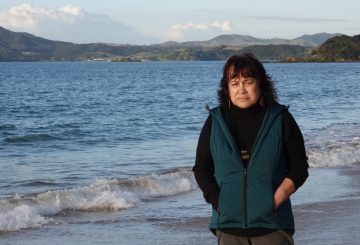The Opotiki District Council will implement a new town centre masterplan, as a way of ‘revitalising’ the downtown area.
The Council endorsed the plan at the latest meeting on January 27. Opotiki Mayor Lyn Riesterer says Opotiki is at the start of a period of large-scale change.
“The Masterplan is about creating a vision of what that future looks like in the town centre so that the growth happens in a way the community wants. We want to make sure that we hold on to the things we love about our CBD and make sure that the aesthetics of the town reflect our history and our plans for the future.”
“The Harbour entrance, the expanding aquaculture industry and the economic development they bring are already turning Opotiki’s prospects around.”
For changes to take place it would require cooperation between council and private owners. Some improvements that are already underway are the upgrades to the skate park, a new entrance to the Motu Trails and Te Tahuhu o Te Rangi.
As part of the masterplan, Council will consider three main options.
The first option is to ‘spruce up’ the town centre. This will involve activities such as painting building facades; repairing verandahs; decluttering signage and replacing flags- with new flags expected to be in place by September.
The second option sees council developing a heritage and taonga trail into, and around, the town centre, including interpretive signage and streetscape improvements to aid wayfinding.
The third option will develop a walkway/cycleway between the town centre and wharf.
This could be supported by streetscape improvements such as interpretive/wayfinding signage, landscaping, and recreation opportunities. Work on the cycle trail would be due to start by the end of August.
According to the Opotiki Town Centre Structure Plan Summary, the work within the masterplan needs to be completed with council’s budget of $200,000.






























































